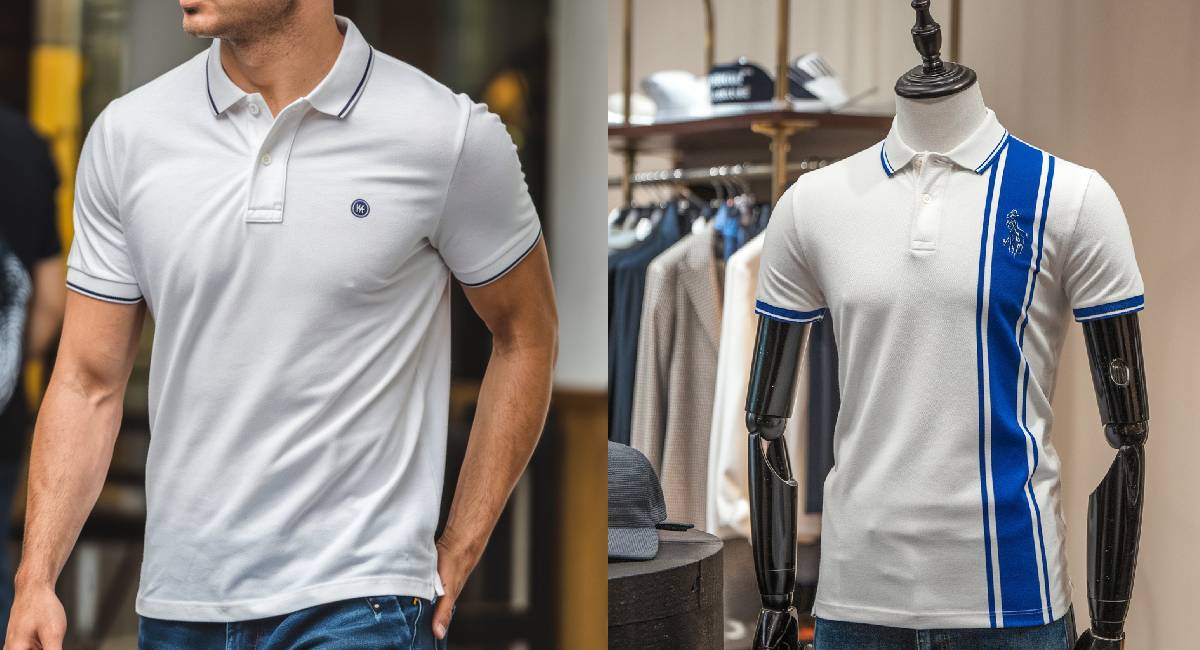The Slim-Fit Polo: A Timeless Trend or an Outdated Style?
Slim-fit polo t-shirts have long been a staple in casual and smart-casual wardrobes. Known for their tailored, body-hugging design, they offer a sleek, modern alternative to traditional polo shirts. Over the years, they’ve evolved in both style and fabric, incorporating performance materials and versatile designs that appeal to various fashion tastes. Despite changing trends in fashion, the slim-fit polo has maintained its place due to its ability to combine comfort, style, and functionality. This article explores the continuing popularity of slim-fit polo t-shirts, examining their place in current fashion and their potential future.
Why Slim-Fit Polo T-Shirts Remain in Style
- Timeless Appeal: The slim-fit polo provides a modern update to the classic polo with its sleek, tailored silhouette, offering a versatile style suitable for various occasions.
- Versatility: It effortlessly shifts from casual occasions to semi-formal events, complementing jeans and chinos or even layering under a blazer for a polished, smart-casual appearance.
- Body-Flattering Fit: The slim-fit cut enhances the body’s shape, giving a more streamlined and polished appearance compared to looser alternatives.
- Comfort and Breathability: Made from soft, breathable fabrics like cotton or performance blends, slim-fit polos offer comfort without compromising on style.
- Celebrity Endorsement: Celebrities and influencers continue to wear and promote slim-fit polos, keeping them relevant in modern fashion.
- Adaptability: Designers tailor slim-fit polos with varying designs, colors, and fabric choices to suit personal preferences and trends.
Where Polos Are Thriving
- Casual and Smart-Casual Settings: Polo t-shirts thrive in casual and smart-casual environments, making them a go-to choice for laid-back yet stylish outfits, whether for work or leisure.
- Workplace: Many companies embrace slim-fit polos as part of business-casual dress codes, especially in industries with a relaxed dress standard. They’re often seen as a polished alternative to traditional t-shirts, offering more flexibility than button-up shirts.
- Athleisure and Activewear: Polos are making waves in the athleisure market, blending fashion with function. Performance fabrics offer moisture-wicking and breathable qualities, making them ideal for active individuals who want both style and comfort.
- Outdoor and Travel: Their lightweight and breathable nature makes slim-fit polos ideal for outdoor activities or travel. Whether it’s hiking, golfing, or sightseeing, they provide both practicality and a stylish look.
- Streetwear and Fashion Forward Communities: Polos are also thriving in streetwear, especially with brands incorporating bold colors, patterns, and modern fabrics, keeping the style fresh and trendy among fashion-conscious individuals.
Challenges to the Polo Trend
- Shift Toward Looser Fits: As fashion trends lean toward more relaxed and oversized silhouettes, slim-fit polos face competition from looser-fitting styles that prioritize comfort and freedom of movement.
- Body Positivity Movement: The increasing focus on body inclusivity and comfort has led to a preference for garments that don’t emphasize a tight fit. Some people may find slim-fit polos restrictive or unflattering, especially for diverse body types.
- Changing Fashion Preferences: Younger generations, particularly, favor casual, oversized styles over more structured, form-fitting options. This shift away from tailored clothing impacts the popularity of slim-fit polos.
- Price Considerations: Slim-fit polos, especially from high-end brands, can be pricey compared to regular polos or other casual wear options. Consumers on a budget might choose more affordable alternatives.
- Perceived Formality: Slim-fit polos can sometimes be seen as too formal or rigid for casual, laid-back environments, limiting their appeal to those seeking ultra-comfortable, easygoing styles.
Future of Slim-Fit Polo T-Shirts
- Continued Innovation in Fabrics: The future of slim-fit polo t-shirts will likely see the incorporation of advanced fabrics, such as moisture-wicking, breathable, and eco-friendly materials, enhancing both comfort and sustainability.
- Increased Versatility: Slim-fit polos will continue to evolve, offering more options for various occasions, from casual wear to semi-formal and even workplace environments, adapting to shifting dress codes.
- Sustainability Focus: As sustainability becomes more important to consumers, brands will likely prioritize eco-friendly manufacturing processes and materials, ensuring that they create slim-fit polos from sustainable fabrics like recycled fibers or organic cotton.
- Customization and Personalization: With the rise of personalized fashion, we may see an increase in slim-fit polos offering customizable designs, colors, and embroidered details, allowing consumers to tailor their garments to individual preferences.
- Integration with Technology: The future could bring tech-infused slim-fit polos, incorporating features like UV protection, temperature regulation, or antimicrobial properties, blending fashion with function.
- Adaptation to Casual Wear: While slim-fit polos remain a smart-casual staple, they will likely continue to blend into more casual streetwear styles, combining comfort and fashion for a broader audience.
Final Thoughts
Slim-fit polo t-shirts have proven to be a timeless and versatile wardrobe staple. With their flattering fit, ability to adapt to various settings, and continued innovation in fabrics and designs, they remain popular across casual, smart-casual, and athleisure styles. Despite challenges like the shift toward looser fits and the rise of relaxed fashion trends, slim-fit polos continue to thrive in many environments, offering both style and comfort. As fashion evolves, these polos are expected to remain relevant, incorporating sustainable materials, customizable options, and advanced fabrics to meet the needs of modern consumers.


